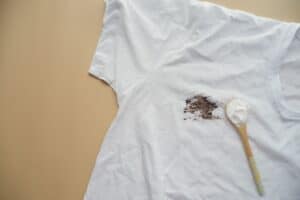Can You Recycle Old Clothes? Common Questions Answered!
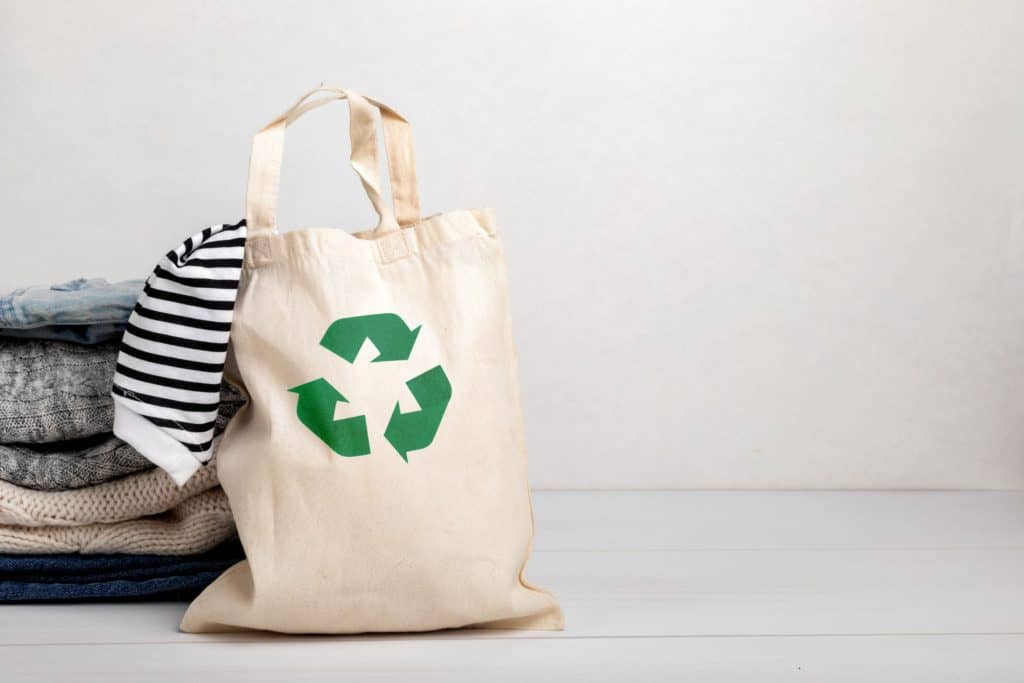
This post was last updated in 2023
As the fashion industry continues to produce massive amounts of clothing, it’s crucial to address the issue of textile waste. Slowing down the production rate and spending less on marketing to get us to consume more than we need would be a massive step forward. Doing our best to curb our consumption habits is also key.
But when that ship has sailed and your clothes are too worn out to be of any use, then recycling has a place. And there are places out there that will take worn-out clothes for recycling
In this blog post, I answer some common questions people have about recycling clothes and provide direction on what can be recycled and where. The questions covered include:
- Can you recycle old clothes?
- Can you put clothes in the recycling bin in Australia?
- How can I recycle my old jeans in Australia?
- Are old pants recyclable?
- Where can I recycle socks in Australia?
- Is it possible to recycle underwear in Australia?
- Can rags be recycled?
- Is it better to recycle clothes or give them to charity?
Click on the question that interests you to find out more.
If you are simply after a list of places that can recycle clothing in Australia, check out this blog post: Where to Recycle Clothing in Australia – All Options Covered
If you are simply after a list of places that can recycle clothing in Australia, check out this blog post: Where to Recycle Clothing in Australia – All Options Covered
Can you recycle old clothes?
Yes, you can recycle old clothes. Old clothing can be shredded and used for other purposes or broken down to its base form, turned into yarn and used to make other textiles. And there are companies in Australia that can do this.
If your clothing is beyond use and repair, check out the blog post Where to Recycle Clothing in Australia – All Options Covered for a list of companies that will take your old clothes for recycling.
But a little bit about the recycling process to show how clothes are recycled.
Technically, old clothes are not recycled but are typically downcycled – downcycling is the process of breaking down materials into their base form and using that to create new products of lesser value and quality.
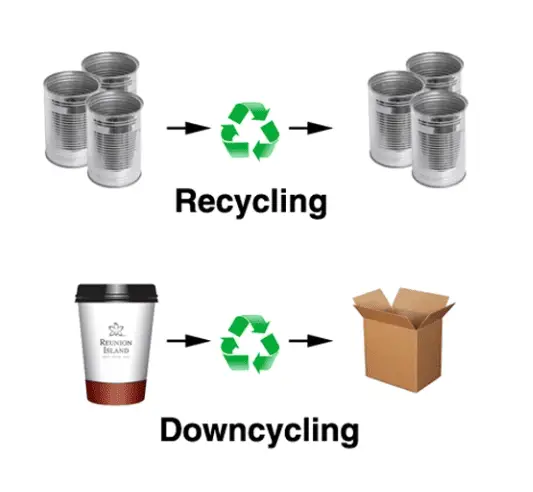
In most cases “recycling” clothing involves cleaning and then shredding the waste to a material that can then be used as rags, insulation, carpet underlay, furniture stuffing etc. The fibres or yarn produced is such low quality, that it can not be used to make new pieces of clothing. Hence, downcycled.
Recycling is when the material is processed to roughly the same type and quality it was originally. So glass can be recycled back into glass, and aluminium can be recycled back into aluminium and still have the same properties.
To some extent, plastic can be recycled back into plastics, although that depends on the plastic type. And eventually, all plastics end up being downcycled because certain properties are lost each time they are recycled.
Recycling is possible for textile waste, in a similar way that it is possible for plastics – textiles can be converted into yarn strong enough to be used to make new garments. However, not all textile waste can be recycled and the process is not infinite. Textiles can only be recycled maybe once before the fibres lose their quality and they can not be used again to make clothing .
Here’s a video that shows the potential when it comes to textiles recycling (and if you watch this to the end you will get a great summary of why recycling is not the solution to our textile waste problem!):
Natural fibres can be shredded, blended, combed and then spun into yarn that can be knitted back into cloth. But the result is of lower quality because the fibres are shorter and the fabric doesn’t have as fine a texture.
When it comes to polyester and other man-made fabrics, the clothing is shredded, granulated and formed into plastic pellets. It can then be melted, extruded and spun into new fibres. As plastic eventually loses its integrity, the resulting fabric is unlikely to be suitable for recycling again.
The downcycling process, of creating very low quality shredded material, is a mature process with very few issues. However there are a couple of issues with the recycling of textile waste into new textiles.
The challenge is firstly being able to quickly and efficiently determine what clothing is made from and secondly, most clothing is made from blended fibres. Given that the process for recycling natural fibres vs man-made fibres is different, this is an issue.
Some progress has been made on the first problem. An organisation based in the Netherlands has built technology that can accurately sort up to 900 kgs of textiles per hour, sorting clothing by material composition.
This technology has yet to develop at a commercial scale and does not appear to be used in Australia.
Blocktexx, one of the largest textile recyclers in Australia, still relies on manual labour to sort through the textile waste it collects. Yes – each piece of clothing is sorted by hand!
(This is why it is important to wash your clothing before you send it off for recycling – no matter how worn out it is, it needs to be clean, for the safety and dignity of the workers that have to manually sort through this waste).
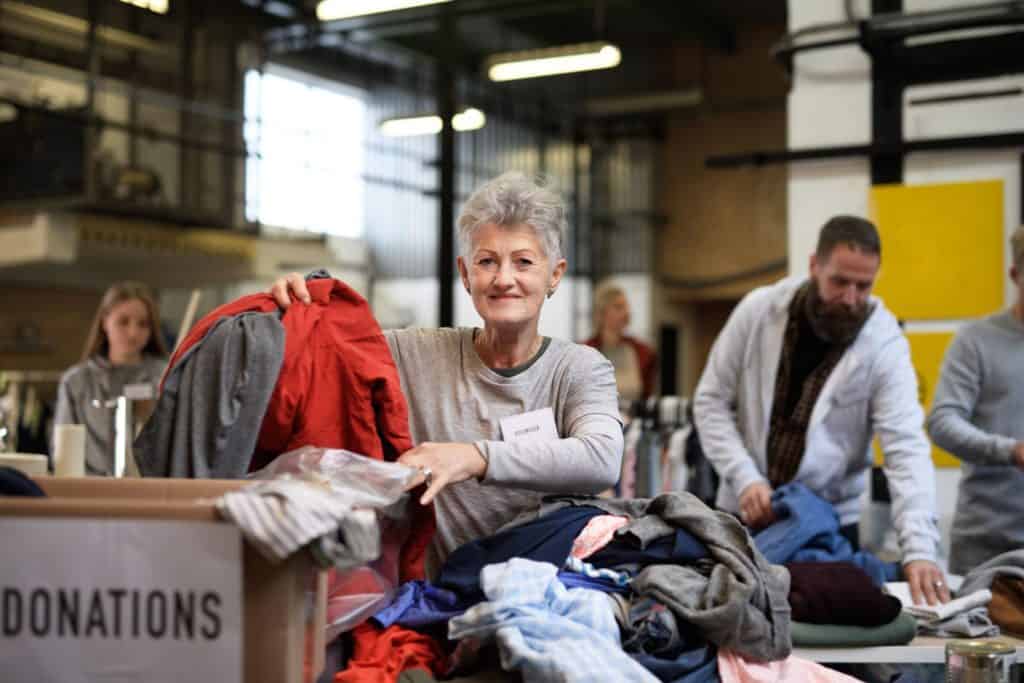
Blocktexx is the only Australian company I have come across that is in the position to address the second challenge – mixed materials. They have adopted a process where blended fibres can be separated through the use of solvents and solutions. So they can recycle cotton and polyester blends, which represent 80% of textiles in use.
The owners of Blocktexx noted in an interview that cotton is broken down to cellulose, which can be used for paints, cosmetics, concrete and more. Polyester goes through a heating and liquifying process to become pellets that can be used for a diverse range of things from playground equipment to furniture, to coathangers. On their website, it appears that the ability to turn the material back into yarn also exists.
Blocktexx currently does not accept individual donations of materials since much of the clothing in our wardrobes is a complete medley of fabric types!
So for now, it seems textile waste from individuals is largely downcycled into insulation, furniture stuffing and the like and technically, textiles from our wardrobes can not be recycled – it can only be downcycled.
Can you put clothes in the recycling bin in Australia?
Clothing and textiles do not go into your (yellow) household recycling bin. If you want to ensure your clothes are recycled, your best option is to send them to an organisation that collect clothing for recycling, such as Upparel, Rcycl, After or retailers that have a take-back program in place.
While there are countries that have been recycling textiles for years, this is a fairly new industry for Australia. For that reason, recycling textiles through our household recycling bins is unlikely to happen anytime soon, if at all.
Some councils may offer textile recycling services, where you can drop off your old clothes for recycling. Not many councils have this as an option but it may be worthwhile to ask.
But I would be wary of these recycling drop-off points. Several operators take the textile waste collected by councils and then sell it overseas, flooding overseas markets with our trash.
Of course, this is not always the case. As an example, the Blue Mountains Council has partnered up with Upcycle 4 Better (U4B), who have placed textile recycling bins at the council’s waste management facilities. According to information on their website, U4B works closely with organisations overseas to upcycle fabrics into new products, typically bags.
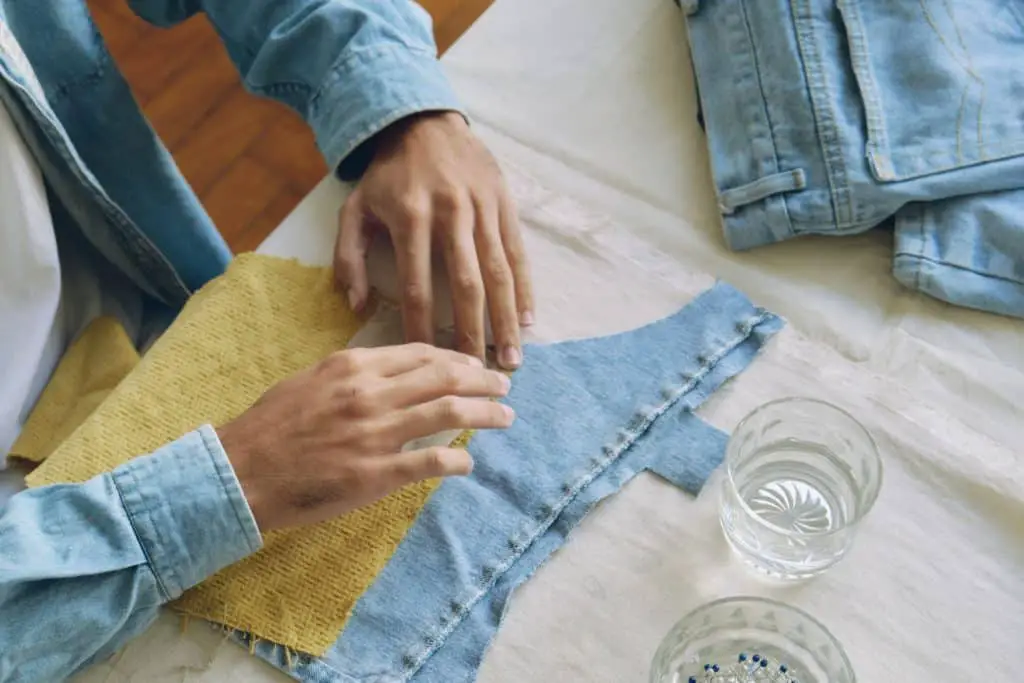
However how they can use every piece of worn-out clothing in this way does have me a little bit wary about the company’s claims!
There are better options – there are other organisations in Australia that collect textiles for recycling and they are more transparent about their processes.
If this interests you, check out the options mentioned in Where to Recycle Clothing in Australia – All Options Covered
There you will find more information about the collection services offered by Upparel, Rcycl, After and others like them. You will also find a list of retailers that take back clothing for reuse or recycling.
How can I recycle my old jeans?
Recycling old jeans in Australia is possible through various avenues. Assuming your jeans are beyond wear and repair, here are a few options to consider:
- Textile Recycling Companies
- Retailer Recycling Programs
- Freecycle Groups
- Upcycling and DIY Projects
- Clothing Donation Bins (although this is not a great option)
- Composting (also not a great option)
1. Textile Recycling Companies
As noted earlier, there are specialised textile recycling companies in Australia that accept old clothing for recycling, and that includes old jeans. All companies in Australia that collect textiles for recycling will accept jeans.
A full list of companies operating in Australia can be found here: Where to Recycle Clothing in Australia – All Options Covered
Just note with jeans – the hard metal components can not be recycled. They are manually cut from jeans before they go through the recycling process. If you want to save the recyclers some work, you could cut them off before you send them off for recycling. Or not. It’s not required, but it might be something you might want to do.
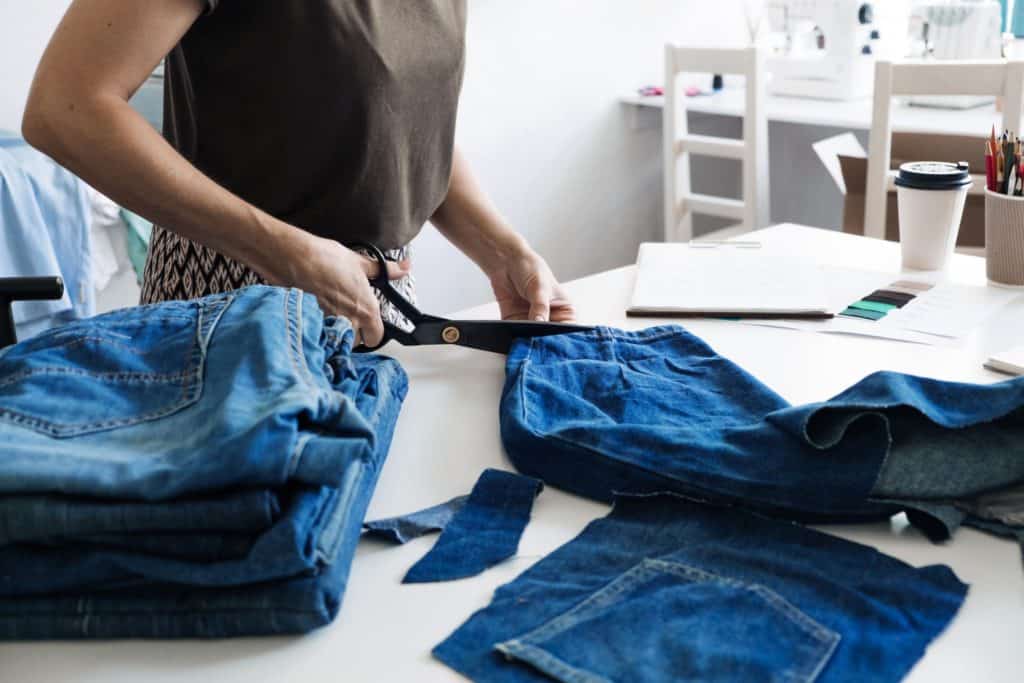
2. Retailer Recycling Programs
Some clothing retailers, such as H&M and Zara, have recycling collection points in their stores, which are used to collect clothing for reuse and recycling. They accept jeans.
These programs aim to reduce waste and promote sustainable practices in the fashion industry. However, as explored in the blog post Where to Recycle Clothing in Australia – All Options Covered, it is not entirely clear what happens to the clothing once it is brought to H&M and Zara.
I would say this is an option only if the textile recycling companies mentioned previously, do not work out for you.
Best option to preempt any of this – purchase your jeans from a retailer that supports sustainability.
Nudie Jean is one such brand. They offer free repairs on all Nudie Jeans denim, keeping your jeans in use for longer.
Nudie Jean is one such brand. They offer free repairs on all Nudie Jeans denim, keeping your jeans in use for longer.
But if you decide you do not want your item mended, they will take your old jeans no matter what condition (provided they are washed). In exchange, you can get 20% off a new pair of Nudie Jeans.
They don’t recycle/downcycle the denim but actually mend them so they can be sold as Re-use denim.
There are stores in NSW, VIC, SA and QLD if this interests you.
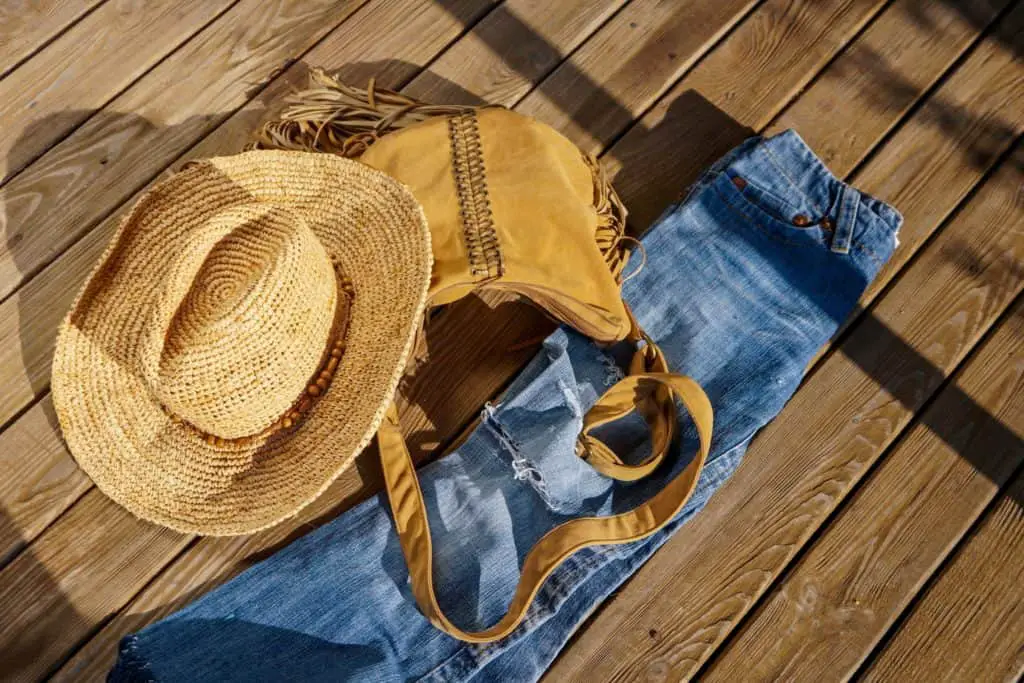
3. Freecycle Groups
Take a photo of your item and post it to Facebook Marketplace for free. Then repost the item to Freecycle or Buy Nothing groups in your area.
You’ll be surprised – someone may want to snatch it up for an upcycling project they have in mind.
4. Upcycling and DIY Projects
If you’re feeling creative yourself, consider upcycling your old jeans into new fashion items or home decor. You can turn them into shorts, skirts, bags, quilts or upholstery.
Just google “upcycle jeans ideas” or search “upcycle jeans” on YouTube and you will get so many ideas.
My favourite is turning jeans into a tote bag:
5. Clothing Donation Bins
So I am not recommending this but did you know that around a third of all clothing donated to charities ends up being recycled? Well, not exactly recycled but “repurposed” or downcycled into fibres that are used as rags, insulation, carpet underlay etc.
So you could put your worn-out clothes in clothing donation bins. It then goes to a sorting facilities where it will be separated from clothing that can be reused and sent to one of their partners that recycle/downcycle the clothing.
But I do not recommend this as an option. There is a risk that your slightly worn-out clothing will be sent overseas. And once it is there, it can cause all sorts of problems (more on this below).
If you want your clothes to be recycled, then it is best to send it to a company that focuses on recycling textiles. Not charities that mainly deal with clothing that can be re-worn.
I mention this option only because it’s a common suggestion from so many other websites and I wanted to have it on the list to make this point.
6. Composting
Composting is also another suggestion you will find on many websites when it comes to recycling jeans.
Now besides pointing out the obvious fact that composting is not recycling, I do not recommend composting jeans because jeans are often made from a cotton-synthetic blend. The elastic parts that give jeans their stretch are typically made from synthetic materials.
A stark reminder of this was posted to Instagram:
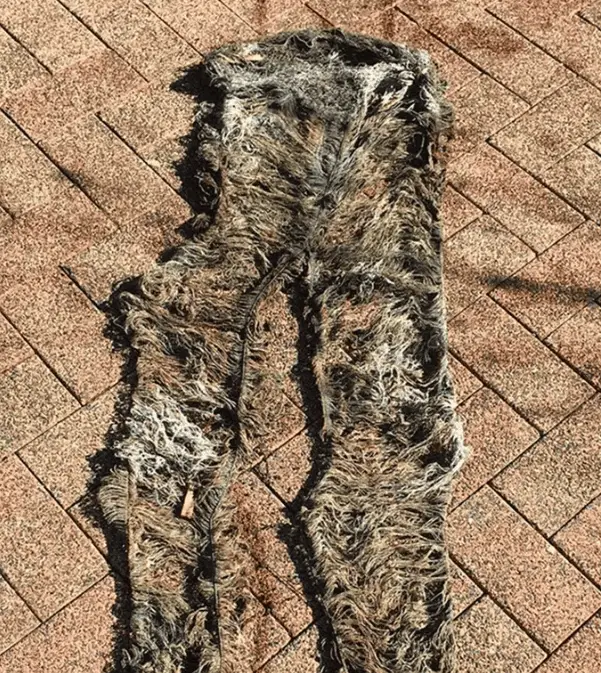
Permaculture coach Graham King placed an old pair of jeans in his compost bin and this was the result.
So I list this idea as a warning not to follow the general advice out there – do not try to compost your jeans!
Are old pants recyclable?
Old pants, like other clothing items, can be recycled. All recycling programs in Australia will accept old pants, no matter what the condition. Send them to places like Upparel, Rcycl, After or retailers that have a take-back program in place. Just make sure you wash them before sending them in.
A lot of the points mentioned in the previous section apply here – in addition to recycling your worn-out pants, you could consider giving away your in Freecycle or Buy Nothing groups on Facebook.
And if you are up for some upcycling projects yourself, there are plenty of things you can do with old pants. A stack of ideas that you can search for on Google, Pinterest or YouTube.
Here’s my favourite, which I am hoping to try one day:
Where can I recycle socks in Australia?
Socks, like other textiles, can not go in your regular recycling bins. However, socks can be recycled through textile collection companies or retailer recycling programs. Send them to places like Upparel, Rcycl, After or retailers like All Days Socks.
But before you jump to recycling consider some reuse options.
Typically socks render themselves useless because they lack a matching pair. So here’s a wacky suggestion – consider wearing mismatched socks. In most cases, no one sees your socks anyway!
Okay if that’s not your cup of tea, consider reusing your socks as cleaning rags. They can be quite handy and the best when it comes to cleaning blinds:
But if your socks are worn out and soiled beyond any kind of use, then recycling is the best option.
All recycling collection companies in Australia will take socks. Here is the link to the list of places where you can send your recycling: Where to Recycle Clothing in Australia – All Options Covered
One option not covered in the post linked above is the All Days Socks take-back program.
This sock company has a service where you can send socks using one of their satchels, which you can purchase for $7.50.
There are no details on their website about this program – can you send in socks from another brand? Can you send other clothing items in for recycling? Is there a weight limit?
There are no details on their website about this program – can you send in socks from another brand? Can you send other clothing items in for recycling? Is there a weight limit?
More likely than no, you can only send in socks for recycling. Possibly socks from other brands as well, based on how other similar programs run.
Personally, I would go with one of the options noted in the blog post linked above since their process is a lot clearer and you can send in other items, not just socks.
Personally, I would go with one of the options noted in the blog post linked above since their process is a lot clearer and you can send in other items, not just socks.
Is it possible to recycle underwear?
Underwear is like any other textile – it can be recycled. However, recycling underwear is challenging due to hygiene considerations and the nature of the materials used. But Underwear for Humanity offers recycling services for underwear and bras.
From my review of textile recyclers in Australia, it was clear that none of the collectors of textile waste would accept underwear for recycling. There was one collection service, After, that does accept underwear for recycling, but they are a small operation limited to Melbourne.
But I was able to find one retailer offering recycling services for underwear and bras – the Underwear for Humanity recycling program.
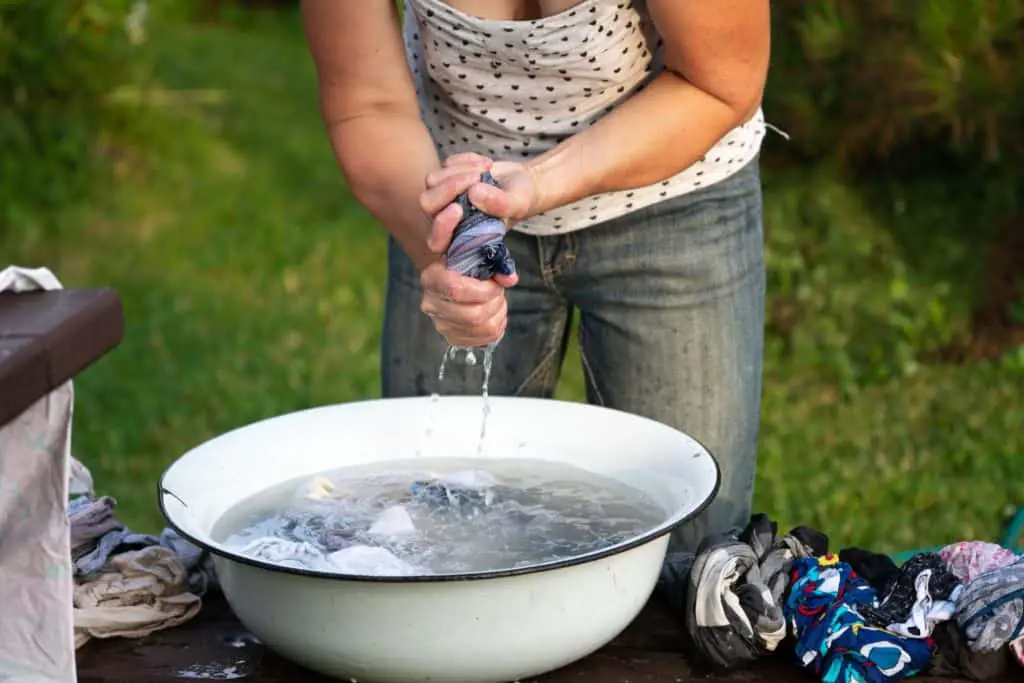
Underwear for Humanity is an underwear retailer focused on using sustainable materials and adopting sustainable practices. The underwear they collect is washed, sorted and sanitised before they are sent to a textile recycling plant to be turned into insulation or carpet underlay.
You can find more details about how it all works in the blog post: What To Do With Old Underwear and Bras – Practical Tips
So there is no excuse for throwing underwear into landfill!
Can rags be recycled?
If you are worried that scrap pieces of clothing can not be recycled – well don’t be. Fabric scraps can be recycled. And soiled rags can be too – as long as you have passed the rags through a wash cycle at home before sending them in for recycling.
Upparel, one of the largest collectors of domestic textile waste, confirmed that they collect fabric offcuts and sewing scraps. I contacted them directly they confirmed you can also send in soiled rags, provided they have been washed before you send them in.
When clothing is recycled in Australia it is typically shredded and turned into material used for insulation, furniture stuffing etc. So for that reason, it does not matter whether the textiles are already shredded.
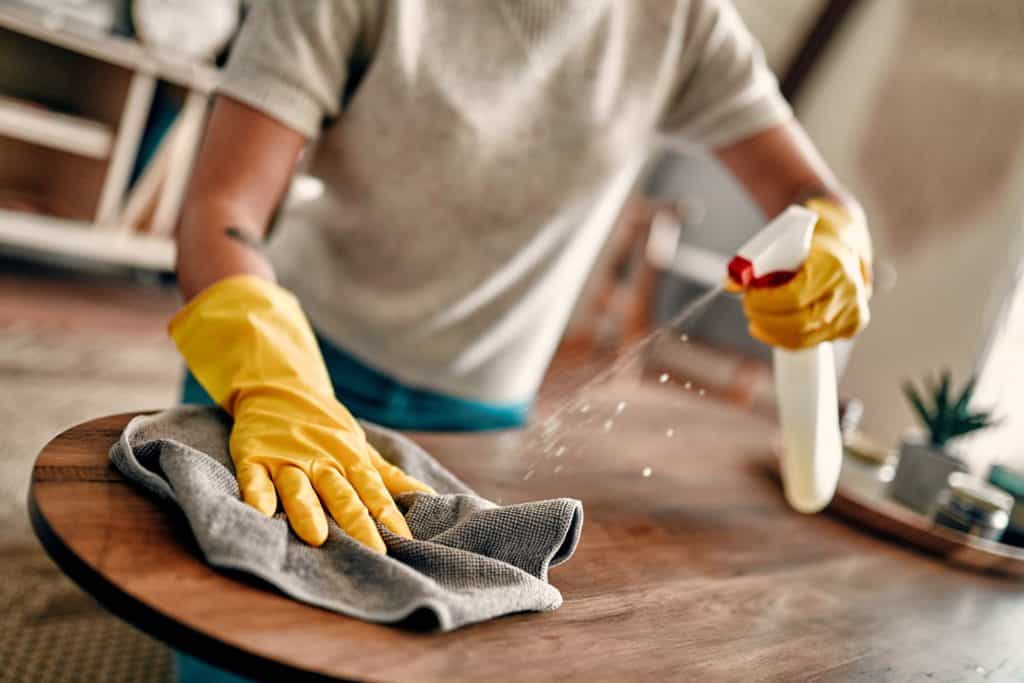
Is it better to recycle clothes or give them to charity?
Reusing an item is always going to be better than recycling so you may think that donating to charity is a better option compared to recycling. But if your clothes are not good enough to sell, it might be better to ensure your clothes are recycled instead of sending clothes to charities who may send these clothes overseas.
When items are donated to charity, only a very small percentage goes to those in need. Items with a lot of wear left in them go onto the shop floor to be sold through second-hand stores. And those that do not make it onto the shop floor but still have some wear left are sold overseas.
And from there they could end up almost anywhere – at best, they are purchased by someone in need but at its worst they end up polluting the countries that these “donations” were meant to help.
So if your item of clothing is something that would not sell well in second-hand stores – something that can still be worn but is looking a little worn out – donating to charity may not be a good option. It’s these clothes that end up overseas.
To learn more about why we don’t want that to happen, have a read of What REALLY Happens to Donated Clothes in Australia.
But when it comes to clothing that has a lot of wear left in them, donating to charities is a safe option.
It can support those in need, helping vulnerable individuals and communities access clothing at affordable prices or for free and it can be used by charitable organisations to generate funds to support various community programs and initiatives.
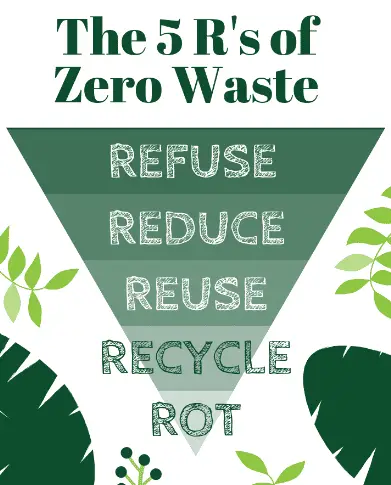
And you ultimately are at the top of the 5Rs hierarchy – the item will be reused, ensuring they continue to be worn and enjoyed by others before reaching the end of their lifecycle.
There are a lot of commercial operators that present themselves as charities or recyclers, that you need to be wary of. Organisations like King Cotton, SCR group and Clothing Clean Up, send a large percentage of donated clothing overseas. They actually sell donated clothing to overseas wholesalers – it’s how these organisations earn an income.
Some other organisations that collect textile waste include Australian Clothing Recyclers, Textile Recyclers Australia and Upcycle 4 Better. They claim that the items they collect do not contribute towards the waste steam in another country but it is not clear what oversight or controls are in place to ensure that.
If I had items that were too worn out to sell, I would not donate them to charity. Instead, I would list them on Marketplace for free.
Many times items like these do get picked up – mainly by people that have just moved to the country. Clearly by people that are more talented than I am at mending clothes and valuing items that are already in circulation.
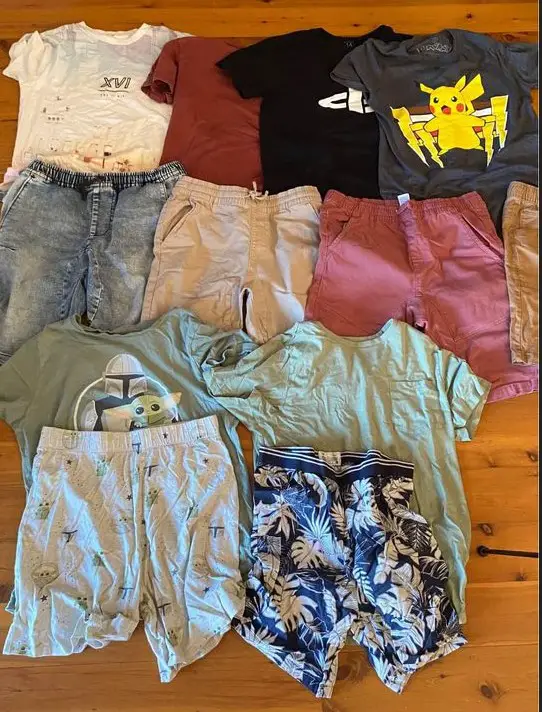
There are also other reuse options to consider, which I cover in this blog post: What to Do With Clothes that CANNOT be Donated
Some of these other reuse options may not work out for you, in which case recycling may be the best option.
Recycling clothes offers several advantages. It diverts textiles from ending up in landfill, reducing the environmental impact of textile waste. It helps conserve resources by repurposing materials and reducing the need for new textile production and it supports the concept of a circular economy, where materials are reused or repurposed rather than discarded after a single use. So it has its advantages.
Ultimately, the decision between recycling clothes and donating them to charity depends on the condition of the items, local reuse options, and your personal priorities. If your clothes are in good condition and can be reused by others, donating to charity is a meaningful option. However, if the clothes are damaged or no longer wearable, recycling ensures that the materials are repurposed and valuable resources are conserved.
And for those items of clothing that are not damaged but are too worn out to sell, then donating to charity is not the best option and recycling may be the best way to go.
Surprisingly so little of our textile waste gets recycled – each year only 7,000 tonnes is recycled while 227,000 tonnes goes into landfill in Australia.
There is no reason for this to occur when there are options available to all of us to recycle just about any textile waste.
Recycling old clothes and textiles in Australia is an important step towards reducing waste and promoting sustainable practices. It is not the solution to the textile waste problem – however, has a part to play in a circular economy.
xxx Tahsin

